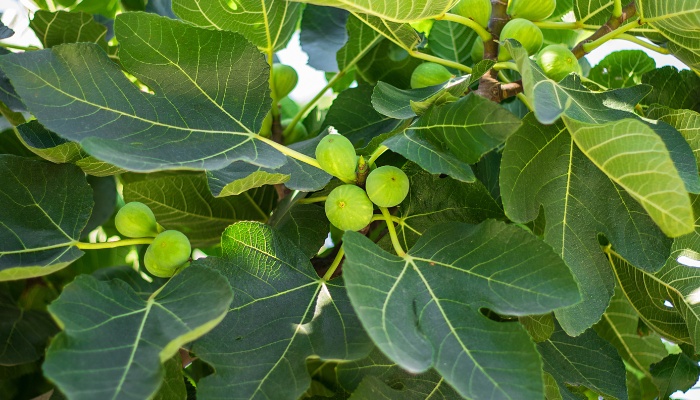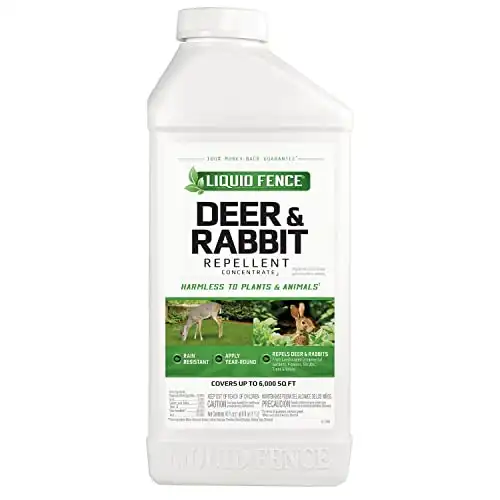Fig trees bring joy to any garden, as they require minimal upkeep, can withstand various weather conditions, and yield a bountiful harvest.
Until you get an unwelcome visit from the local deer community, and then the worry begins.
Deer are not fond of fig fruits. The waxy figs don’t appeal to deer as they prefer to munch on small twigs, leaves, and fruits like apples and pears. The latex sap contains toxins that deter deer unless they’re very hungry and the fig tree is the only foraging source in the garden.
Even if deer don’t eat the fruits, they can still damage the fig tree in more ways than one.
Read more to learn how to protect your fig trees against deer and what other wildlife find fig trees attractive.
If you have a lot of questions regarding fig trees, you’re not alone. You’ll find the direct and simple answers you’re looking for in my article Common Fig Tree Questions.
Deer and Fig Trees – What To Know
When it comes to fig trees and deer, it’s better to be prepared. You never know when a hungry deer might come into the garden and decide to maul the tree.
The damage deer can cause to the tree is not limited to the young leaves and twigs.
Will Deer Eat Fig Trees?
In general, your fig fruits are safe from deer in the area. Figs are not a favorite fruit for deer, and they don’t find the waxy skin of the fruits appealing.
The sap is also hard to digest, and even the leaves offer little nutrition for deer.
As for the wood, it contains toxic compounds, and deer have little interest in it as well. When given other food options, deer generally will leave fig trees alone.
Do Deer Eat Figs?
Deer usually don’t eat figs as they don’t like the texture and taste of the fruits. Deer cannot digest the tree’s sap, and the fruits have little nutrition for the animals.
However, ripe fruits that fall off the tree can be a good snack for a very hungry deer.
Do Deer Eat Fig Leaves?
When a deer eats fig leaves, it implies they’re very hungry and have no other food source. In general, the deer will avoid fig leaves because they’re not easy to digest.

Why Deer Usually Avoid Fig Trees
Fig trees offer little in terms of nutrition for deer. Deer don’t care about visual appeal, and they don’t tend to find figs tasty.
The leaves, bark, twigs, wood, and fruit don’t offer much nutritional value for the deer, and they will usually opt for other food sources before resorting to eating fig trees.
Instances When Deer Might Snack on Fig Trees
Hunger is a powerful motivator. This applies to deer as well as any other living animal.
So when a hungry deer stumbles upon fallen fig fruits under the tree, it may eat them to stave off hunger until it finds better food. The same goes for the fig leaves and twigs.
Is Fig Wood Toxic?
Fig wood contains sap that has the organic compounds psoralen and bergapten.
Both of these are toxic to small animals. However, their impact on the deer is negligible due to the size of the animals.
Know that the latex produced by the tree is an irritant, so consider using gloves when pruning or picking up fallen branches.
Can a Fig Tree Recover From Deer Damage?
It depends on the amount of damage the deer has inflicted on the tree.
If the tree is young, the damage can be substantial, and the tree will take a long time to recover.
This assumes the deer didn’t damage the trunk or whittle down the whole canopy.
Established trees won’t be affected much by a few chewed wigs and could begin to recover within weeks.
How To Protect Fig Tree From Deer
To protect your fig tree from deer and other wildlife, you’ll need to get creative.
You could try to deter the deer with motion-activated sprinklers. Deer don’t like water, and they’ll learn to leave your garden alone.
You could also try spraying the tree with deer repellents. When that doesn’t work, you could try fencing the tree to prevent the deer from reaching it.
Motion-Activated Sprinklers
Motion-activated sprinklers work as you’d expect. When the sprinkler detects movement within its range, it activates a jet of water that covers the radius of that range.
Any animal at a certain height would be soaked with water in no time. Deer usually will flee the area, leaving the fig tree alone.
Ultrasonic Animal Repeller
Animals, deer included, have an auditory range that is far superior to humans. Deer can hear low frequencies that the human ear fails to detect.
This ultrasonic animal repeller generates ultrasonic waves between 13.5khz and 65khz, a siren sound, and flashing lights that scare deer away. It can also be used to keep dogs and other small animals away.
Deer Fencing
A sure way to keep deer off your property is to fence them out. Use a metal fence to fight erosion and make sure the fence is at least 6 feet high.
Deer are excellent high jumpers, and a low fence won’t keep them out of your garden. You can install a fence around the entry points to the garden or have one surround the whole garden.
Liquid Deer Repellent
Although deer are not known for their discerning taste, the animals draw the line when it comes to certain offputting smells and tastes.
This repellent will keep deer and rabbits away with the power of its odors alone. It has a long-lasting effect and can stay potent even after rainfall.
Spray it around the entry points of the garden as well as around the base of your fig trees.
Individual Tree Cages
If installing a fence around the garden is not a practical option, then you can try putting a cage around each individual tree.
The cage should be around the drip line of the tree to protect ripe fruits that fall and prevent deer from getting to them.
Keep the cage about 6 feet tall, and plant it firmly in the ground as the deer might press against it to take it down.
Deer-Repelling Plants
Deer are averse to odorous plants such as chives, lamb’s ear, daffodils, marigolds, Russian sage, and bee balm among others.
Plant these herbs and flowers in strategic spots around the fig tree, and they’ll act as a natural shield to keep deer from approaching the tree or inflicting any damage on it.
What Animals Eat Figs?
Deer are not the only wildlife you must look out for when you have a fig tree in the garden.
Squirrels are known to feed on fig fruits, make a real mess in the canopy, and to burrow in the surrounding soil possibly damaging roots.
If you have possums and raccoons in your area, they’ll find the fig tree an attractive source of food as well.
Birds such as crows and woodpeckers also feast on the ripe fruits before you had a chance to harvest them.
Related Questions:
Do Squirrels Eat Figs?
Squirrels are known for their large appetites, and figs feature high on their menu.
While scurrying over the fragile branches chasing ripe fruits, squirrels can cause a lot of damage to the tree in addition to eating through the harvest.
Do Birds Eat Figs?
Many birds feast on ripe figs and even those fruits which are not ripe yet. Birds like crows and woodpeckers can reach the top of the tree and have access to the fruits that other animals cannot get to.
Birds test the ripeness of figs by pecking at them, which causes scars and ruins the fruits.
Closing Thoughts
While deer are not particularly fond of fig trees, there are instances, such as extreme hunger, when a deer will snack on fallen fruits.
Other animals such as squirrels, possums, and coons can cause a lot of damage to the fig tree due to its fragile wood.
If you enjoyed this article, you’re sure to love these as well:
- Are Fig Leaves Edible? Definitely! 10 Ways To Enjoy Them
- When Do Fig Trees Produce Fruit? Age, Harvest Season & More



